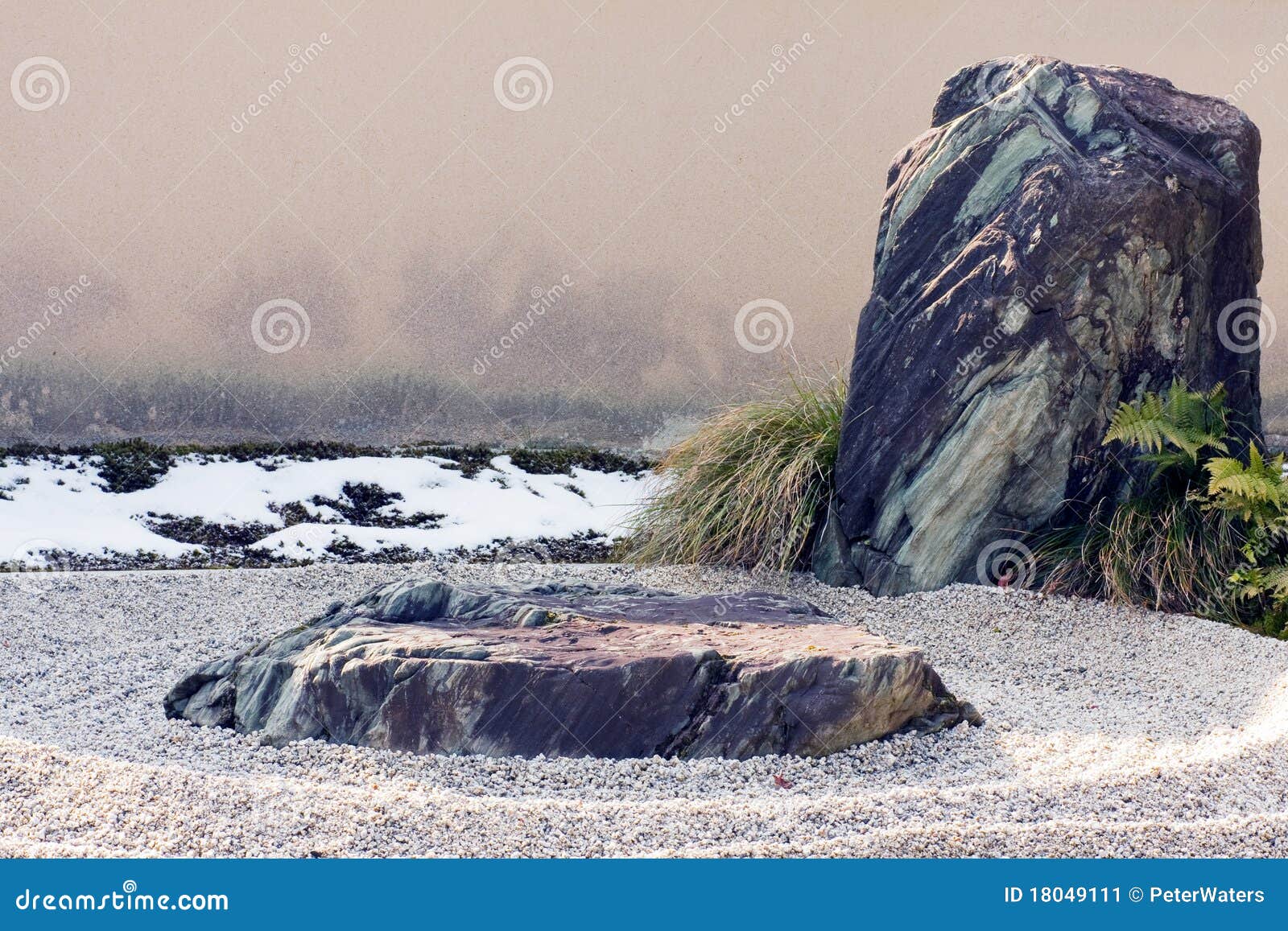

In zen gardens, it represents water, or, like the white space in Japanese paintings, emptiness and distance. In the Shinto religion, it was used to symbolize purity, and was used around shrines, temples, and palaces. White sand and gravel had long been a feature of Japanese gardens. The ocean style featured rocks that appeared to have been eroded by waves, surrounded by a bank of white sand, like a beach. He described several other styles of rock garden, which usually included a stream or pond, including the great river style, the mountain river style, and the marsh style. This kind of garden featured either rocks placed upright like mountains, or laid out in a miniature landscape of hills and ravines, with few plants. "In a place where there is neither a lake or a stream, one can put in place what is called a kare-sansui, or dry landscape". The Sakuteiki described exactly how rocks should be placed. They adapted the Chinese garden philosophy of the Song dynasty (960–1279), where groups of rocks symbolized Mount Penglai, the legendary mountain-island home of the Eight Immortals in Chinese mythology, known in Japanese as Horai.
#Raked path landscape arch manual#
These early gardens were described in the first manual of Japanese gardens, Sakuteiki ("Records of Garden Keeping"), written at the end of the 11th century by Tachibana no Toshitsuna (1028–1094).

Stone gardens existed in Japan at least since the Heian period (794–1185). They were intended to imitate the essence of nature, not its actual appearance, and to serve as an aid for meditation. Classical zen gardens were created at temples of Zen Buddhism in Kyoto during the Muromachi period. Many, with gravel rather than grass, are only stepped into for maintenance. A zen garden is usually relatively small, surrounded by a wall or buildings, and is usually meant to be seen while seated from a single viewpoint outside the garden, such as the porch of the hojo, the residence of the chief monk of the temple or monastery. Zen gardens are commonly found at temples or monasteries. It creates a miniature stylized landscape through carefully composed arrangements of rocks, water features, moss, pruned trees and bushes, and uses gravel or sand that is raked to represent ripples in water. The Japanese dry garden ( 枯山水, karesansui ) or Japanese rock garden, often called a zen garden, is a distinctive style of Japanese garden. A mountain, waterfall, and gravel "river" at Daisen-in (1509–1513)


 0 kommentar(er)
0 kommentar(er)
